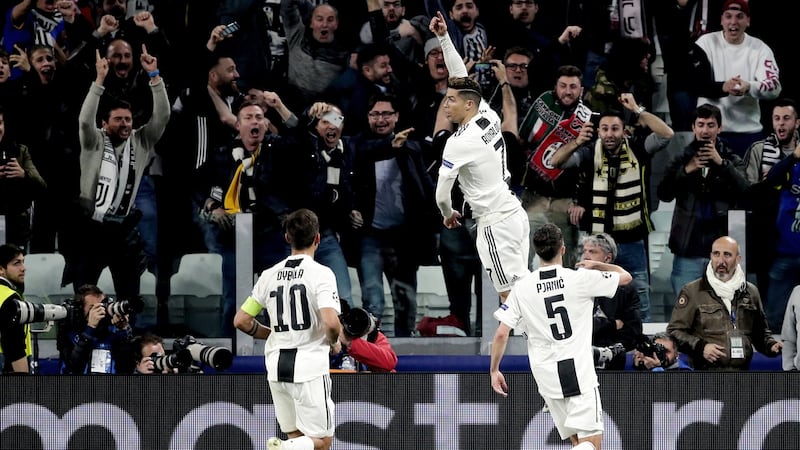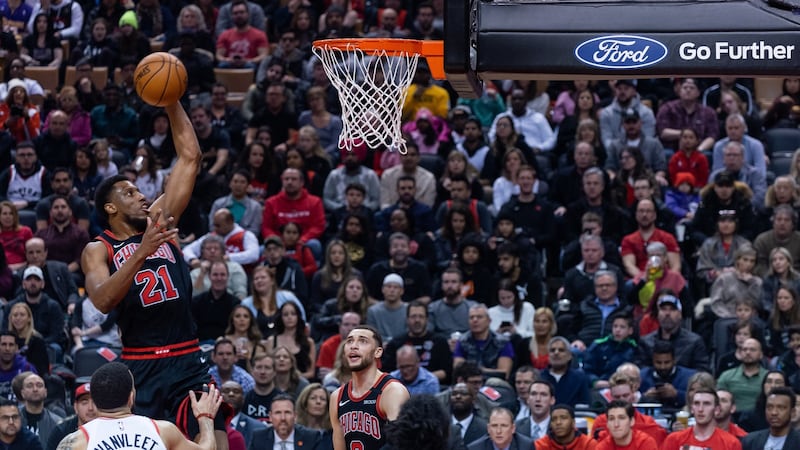It’s a quiet week in the world of live football on television this week. With just a few FA Cup replays and only four Premier League matches at the weekend due to the league’s broken up “winter break”, it’s by a long way the quietest seven-day period for top-flight English football in years.
The Champions League and Europa League are still in winter hibernation, ready to reawaken in two weeks’ time. Maybe it’s time, briefly, to take a step back from the relentless flow of football on the box. Go outside, read a book, do something else with your time.
Not quite. There are still 52 live football matches on television in Ireland this week. Between Sky Sports, BT Sport, Premier Sports and BBC you can have more than your fill of live action ranging from Oxford United v Newcastle United in their FA Cup replay on BBC One on Tuesday night to the Milan derby on Premier Sports this Saturday.
And when you’ve got over this (quiet) week it only starts to ratchet up again with the week commencing February 17th bringing a total of 70 live matches over seven days to your screens as the Champions League last 16 and the Europa League last 32 kick off while a full programme of Premier League action takes place that weekend.
If we take it up a gear and get the calculators out, the recent announcement that LaLigaTV will now be included as part of Sky’s Sports Extra package means that, over the course of a season customers who sign up to both Sky Sports and Sports Extra will have 1,248 live matches on their screens from the Premier League, the Football League, the Champions League, the Europa League, the Carabao Cup, the FA Cup, the Scottish Premier League, the Scottish Cup, the Scottish League Cup and LaLiga.
Gasping
And that’s not even including the other matches you get from the Bundesliga, Serie A, the Eredivisie, Ligue 1, MLS, the Australian A League, the Women’s Super League, the National League, the Chinese Super League and, on the international front, the Nations League and Euro 2020 qualifiers.
And if you’re really, truly, gasping for more, there are five live Northern Irish League matches thrown in on top as well.
The headline price for all of this football (and let’s not forget that there are heaps and heaps of other sport thrown in as well) is €92 a month if you sign up to Sky Sports and Sports Extra. However, with deals such as half price for six months or bundles including broadband or just the old-fashioned tactic of ringing up and saying you’re going to cancel in order to secure a better deal, most customers won’t be paying €92 a month just to watch sport.

But whatever you pay, there is no denying that the amount of sport on television, especially football, is hard to get your head around. And yet this is a time when we’re being told that, thanks to smartphones, social media and the “instant gratification” age that we live in, attention spans are decreasing and distractions are becoming more distracting.
A 90-minute football match suddenly seems like a long time to sit through and watch properly when, according to some studies, human attention spans are now around eight seconds – one second less than that of the eternally maligned goldfish.
Now, this is highly disputed and a lot of experts do say that it’s not so much a decrease in attention span but rather a difficulty in focusing on one particular thing due to the level of messages, alerts and notifications that are constantly being thrown at us via the devices in our pockets.
A study carried out last year at the Technical University of Denmark by researchers including Dr Philipp Hövel of University College Cork showed that people now have more things to focus on – but often do focus on things for short periods of time.
Philipp Lorenz-Spreen, who also worked on the study, said at the time that “content is increasing in volume, which exhausts our attention and our urge for ‘newness’ causes us to collectively switch between topics more regularly”.
After Liverpool’s recent 2-0 win over Manchester United at Anfield, Jamie Carragher tweeted the following day that 3.5 million people had tuned in to watch, making it Sky Sports’ second highest audience ever. Gary Lineker’s reply that it was only 400,000 less than watched Tottenham’s FA Cup replay against Middlesbrough on BBC a few days earlier was another example of how football on terrestrial television still attracts far bigger viewing numbers than even the biggest matches on pay TV.
But should the question not necessarily be: who is watching more than 1,248 live matches in a season? But rather, who is properly watching any of those matches in full?
Distracted
If any one of us asked ourselves when was the last time we watched a match without checking our phones numerous times we’d be hard-pressed to come up with an answer. There’s even a name for it: second-screening. A recent study by Nielsen Television Audience Measurement showed that 45 per cent of the people they looked at used a phone, tablet or laptop very often or all of the time while watching television while just 12 per cent never looked at another device.
Within a 90-minute football match there is a lot of time to be distracted and the fact is that, now, no one has to watch a match to see the main parts.
During that recent Liverpool win, the clips posted by Sky Sports on Twitter of the main moments in the match were all viewed between 250,000 and 450,000 times each. The one-minute, 48-second clips of Roy Keane and Jamie Carragher debating over Ole Gunnar Solskjær’s credentials after the match was viewed 3.8 million times – more than the entire combined audience for the match itself.
The bitesize element of the likes of Twitter and Snapchat is one of the main reasons they have become so successful and some sports have even attempted to tap into that market of “time poor” consumers through the likes of Twenty20 cricket, rugby sevens, GolfSixes and the likes.
You know those annoying ads you see at the start of a YouTube video which you can’t skip? Well they’re exactly six seconds long, the perfect amount of time to get your full attention. Sports media is also seen to be making a foray into shorter offerings which can hold the full attention of more people.

In 2018 the NBA announced that they were bringing in an option for fans to buy a “fourth-quarter pass” at a cost of $1.99 which allows consumers to watch the final 12 minutes of a match. Shortly afterwards they followed that with the option of buying a full game for $6.99, the last three quarters for $4.99, the last two quarters for $2.99 or the last quarter for $1.99.
At the time, NBA commissioner Adam Silver explained the move as “we imagine a situation where a fan has dinner at 8 o’clock and only has 30 minutes and can choose to buy a half-hour of a game”.
Similar examples include the NFL Red Zone where host Scott Hanson switches between each of the NFL matches on a Sunday afternoon to show the viewer the most exciting parts while BT Sport’s Champions League Goals Show is a similar initiative in this part of the world where viewers can see all of the goals as they go in.
Could we see a similar option to the NBA’s quarter pass come into play with football or other sports?
For the right price, the option of buying the second half of a match or maybe the back nine of the Masters on Sunday certainly does sound appealing.
– This article is part of a series of consumer-based sports stories. If you have any queries, stories or issues regarding travel, tickets, sport on television or anything else you can email rcroke@irishtimes.com or via Twitter @Ruaidhri_Croke.













